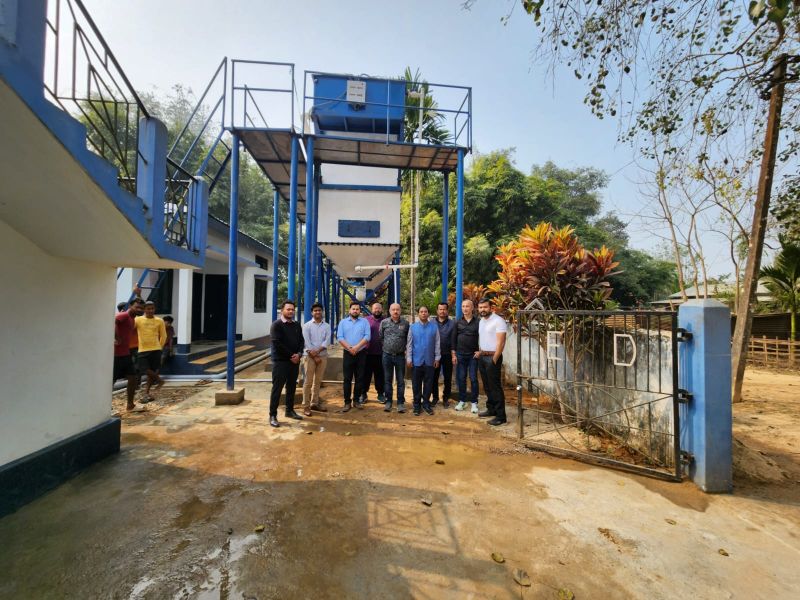
Revolutionary Water Purification System Delivers 1,000 Litres for Just ₹20

 :
| Updated On: 19-Jun-2025 @ 5:16 pm
:
| Updated On: 19-Jun-2025 @ 5:16 pmSHARE
Scientists at the Indian Institute of Technology (IIT) Guwahati have developed an affordable and highly effective water treatment system that promises to transform access to safe drinking water in India’s fluoride-affected regions. The new system, capable of treating up to 20,000 litres of contaminated groundwater daily at a cost of just ₹20 per 1,000 litres, is aimed particularly at regions plagued by high fluoride levels—such as Rajasthan, Telangana, Andhra Pradesh, Karnataka, Haryana, and Gujarat. These areas face a significant public health crisis due to skeletal fluorosis, a debilitating disease that causes hardened bones and joint stiffness.
The four-stage water purification system was developed under the leadership of Professor Mihir Kumar Purkait from the Department of Chemical Engineering. The team conducted a 12-week real-world trial, and their findings were published in the reputed scientific journal ACS ES&T Water. The results were impressive: the system successfully removed 94% of iron and 89% of fluoride from groundwater, making it compliant with Indian drinking water safety standards.
The purification process is both innovative and simple. It begins with aeration, where a specially designed aerator introduces oxygen to remove dissolved iron. The second stage is electrocoagulation, where a mild electric current passes through aluminum electrodes, releasing charged particles that bind with contaminants. These metal ions serve as coagulants, aggregating suspended solids and precipitating dissolved pollutants. In the third stage, known as flocculation and settling, the aggregated particles form flocs that settle at the bottom of a specially designed chamber. Finally, the water flows through a multi-layer filtration unit composed of coal, sand, and gravel to remove residual impurities.
One of the standout features of the system is its cost-effectiveness and low maintenance. Designed to operate efficiently with minimal oversight, it has an estimated 15-year lifespan. The electrodes, a critical component of the system, need to be replaced only once every six months. This reduces operational costs and makes the system ideal for rural and underserved communities.
The first successful pilot installation of the system has already been completed at Changsari in Assam. The pilot was conducted in collaboration with the Public Health Engineering Department of Assam and Kakati Engineering Private Limited, showcasing the system’s feasibility and scalability.
Looking to the future, the IIT Guwahati team is working to enhance the system’s sustainability by integrating renewable energy sources like solar and wind power. Professor Purkait noted that the hydrogen gas generated during electrocoagulation could also be harnessed for energy use. Additionally, the team is exploring the integration of smart technologies such as real-time sensors and automated controls to further reduce human intervention.
Their ultimate goal is to develop a comprehensive, decentralized water treatment solution that combines various purification technologies. Such a solution would be particularly valuable in remote areas, where traditional water infrastructure is lacking or inefficient.
The project team included post-doctoral researchers Dr. Anweshan and Dr. Piyal Mondal, and research scholar Mukesh Bharti—all from the Department of Chemical Engineering at IIT Guwahati. This groundbreaking innovation offers a promising, sustainable solution to one of India’s most persistent and widespread water safety challenges.
Contact Us
House. No. : 163, Second Floor Haridev Rd, near Puberun Path, Hatigaon,Guwahati, Assam 781038.
E-mail : assaminkcontact@gmail.com
Contact : +91 8811887662
Enquiry
×
Reporter Login
×